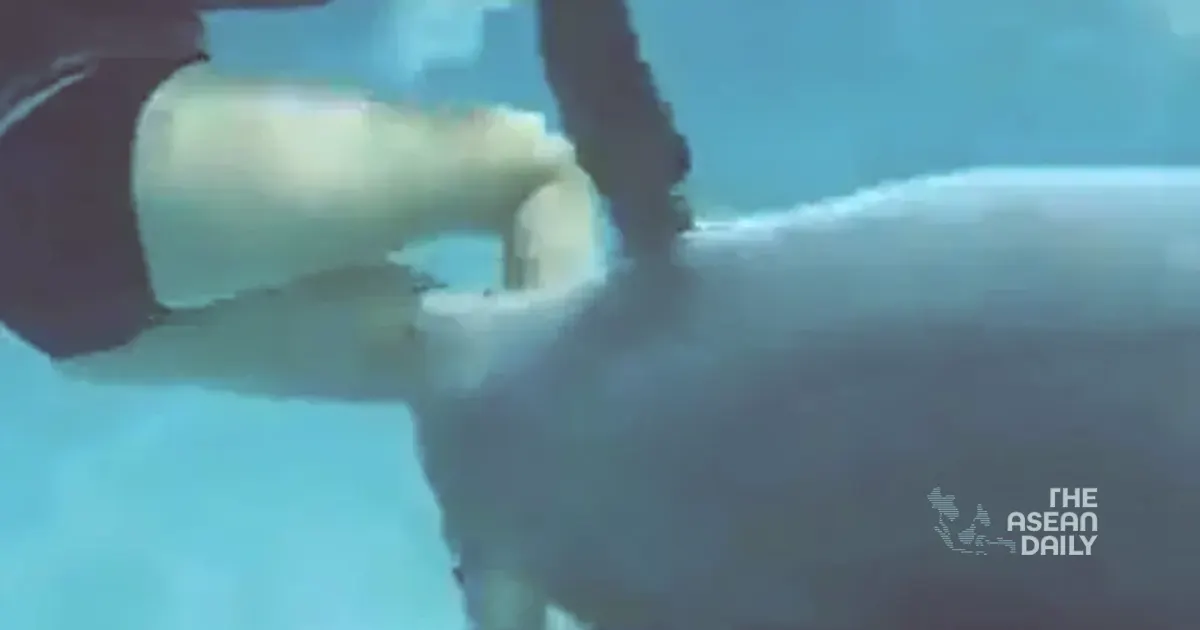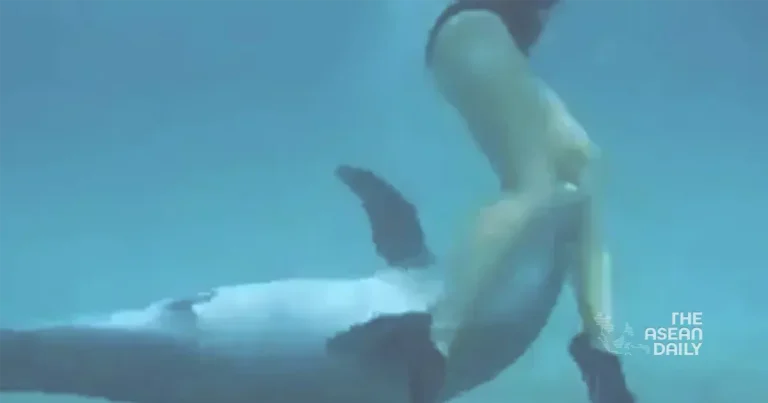27-8-2024 (TOKYO) A lone bottlenose dolphin has become the centre of controversy in the seaside town of Mihama, Japan, as it stands accused of a spate of attacks on swimmers. The unusual behaviour of this solitary cetacean has sparked concern among local officials and marine biologists alike, prompting a deeper examination of the complex relationship between humans and these intelligent sea creatures.
Since the beginning of the year, there have been 18 reported incidents involving the dolphin, with injuries ranging from minor bites to more severe lacerations. In one particularly distressing case, a primary school pupil required over 20 stitches to treat a finger injury inflicted by the animal. The previous year saw at least six people hurt in similar encounters, including one swimmer who suffered broken ribs.
Local authorities have issued stern warnings to beachgoers, highlighting the potential dangers posed by the dolphin. “These mammals can inflict serious harm with their sharp teeth, causing bleeding,” cautioned a municipal spokesperson. “Even more alarmingly, they possess the strength to pull individuals into deeper waters, which could prove life-threatening.”
While dolphins are often perceived as friendly and docile creatures, experts stress that they are wild animals capable of aggressive behaviour. Professor Tadamichi Morisaka, a cetology expert from Mie University, has identified the culprit as a 2.5-metre long dolphin previously observed off the Fukui coast. “The distinctive markings on its dorsal fin, which serve as a unique identifier akin to a human fingerprint, match those of the dolphin seen last year,” Professor Morisaka explained to NHK, Japan’s national broadcaster.

The professor hypothesises that the dolphin’s actions may be a misguided attempt at social interaction. “Male bottlenose dolphins often communicate through play-biting,” he noted. “It’s plausible that this individual is not intentionally trying to harm people, but rather attempting to engage using typical dolphin behaviour.”
However, other marine biologists propose alternative theories for the dolphin’s unusual conduct. Dr Simon Allen, a principal investigator with the Shark Bay Dolphin Research project, suggests that sexual frustration or a desire for dominance could be driving factors. “Bottlenose dolphins are highly social animals, and their interactions can be quite physical,” Dr Allen explained. “Hormonal changes, lack of sexual outlets, or a need to assert dominance might lead to such aggressive behaviour towards humans.”
Dr Allen also posited that the dolphin may have been ostracised from its pod, leading it to seek companionship elsewhere. This social isolation could potentially explain its increased interactions with humans.
Dr Matthias Hoffmann-Kuhnt, a marine mammal expert from the National University of Singapore, offers yet another perspective. He believes the dolphin’s actions could be defensive, triggered by inappropriate human behaviour. “In my experience, aggressive responses often occur when people get too close to dolphins or behave inappropriately around them,” Dr Hoffmann-Kuhnt stated. He cited instances of individuals attempting to ride dolphins or interfering with their blowholes as potential catalysts for aggression.
The expert also highlighted the remarkable memory of dolphins, suggesting that a previous negative encounter with humans could be influencing the animal’s current behaviour. “Much like elephants, dolphins have excellent long-term memory and can recall past mistreatment,” he explained.




